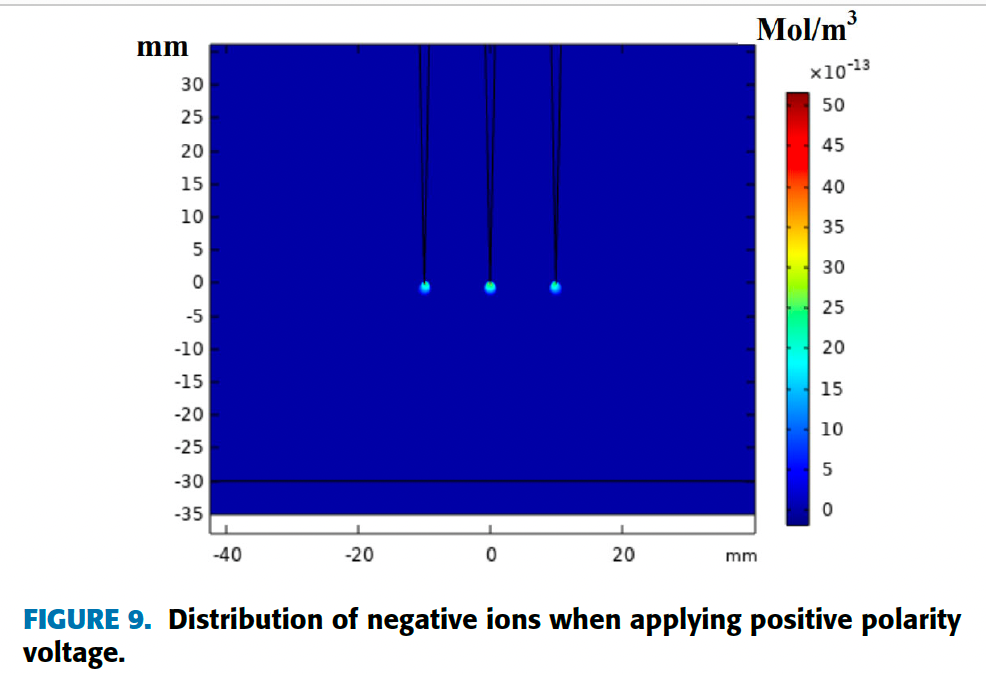-
-
May 10, 2021 at 11:37 am
Ammar676
SubscriberHey everyone,
Does anyone know how to simulate Ionic wind? I need recommendations on how to start and which analysis would be perfect for that topic.
Thanks
May 10, 2021 at 6:58 pmSurya Deb
Ansys EmployeeHello,
You might want to take a look at Fluent's MHD module.
I guess to simulate the ionic wind, you will also need to model the ions using DPM.
Once MHD is activated, you should be able to provide electrical properties to DPM particles including charge density.
This can be combined with other flow features.
Regards SD
May 17, 2021 at 7:59 amAmmar676
SubscriberThank you so much for your time. However could you please elaborate on the MHD and DPM?
I am still a beginner in ANSYS Fluent so I'd appreciate it if you can simplify it to me please.
Best Regards
Ammar
May 17, 2021 at 8:15 amRob
Forum ModeratorDPM - Discrete Phase Model.
MHD - Magnetohydrodynamics
If you're not overly familiar with the software I suggest working through the tutorials: this is unlikely to be an easy project.
May 17, 2021 at 8:17 amAmmar676
SubscriberThanks Rob for your comment.
Where can I find such tutorials?
May 17, 2021 at 9:42 amRob
Forum ModeratorClick on "Help" in Fluent, there are some in the documentation along with videos on our YouTube channel (some linked from documentation).
May 19, 2021 at 10:27 amAmmar676
SubscriberIs there any other way to simulate the ionic wind in a simpler form.
If you reckon, can I do it on ANSYS Workbench?
May 19, 2021 at 3:06 pmRob
Forum ModeratorBreak the problem down into parts: what is the ionic wind? If you can define that, what do you need to model it? I don't mean in Ansys terms I mean what do you need to describe the problem?
May 23, 2021 at 9:07 amAmmar676
SubscriberSo I decided to simulate it on ANSYS Fluent. What I basically did is that I modelled two electrodes surrounded by an enclosure and then I defined the inlet, outlet, and the wall. I also initialized MHD and turned on the DPM. But, how can I add voltage to the electrode so I can view the transfer of charges?
May 24, 2021 at 8:25 amRob
Forum ModeratorYou'll probably need UDFs to assign a scalar electric field and then another UDF to add that force to the particles. Neither are going to be easy, and we (staff) can't help much with UDFs on here, others can: the limit of our advise is to read (very carefully) the UDF manual.
May 24, 2021 at 9:27 amAmmar676
SubscriberThanks a lot. You have helped me so much !
May 24, 2021 at 6:35 pmAmmar676
Subscriber, Is it possible to simulate a small airplane being propelled by ionic wind on ANSYS Fluent?!
I gave it a thought and I think it would be a nightmare, donÔÇÖt you think?
May 25, 2021 at 10:39 amRob
Forum ModeratorPretty anything is possible, whether it's easy, sensible or physically realistic is an entirely different question. How do you intend to generate enough electron flow to move the mass?
May 25, 2021 at 11:02 amAmmar676
SubscriberWell, the electron flow would be generated by a massive electric field difference between thin and thick electrodes so I think it wouldn't be an issue to propel an airplane that barely weighs 5 Kgs.
I was wondering if I can simulate moving objects through ANSYS Fluent.
My professor just wants to see any moving object pushed by ionic wind.
It got even more worse, since I don't have any given information or an actual application. In fact, I have to come up with everything and I have been explaining to my professor that I cannot just make things up when I have a lot of unknowns.
May 25, 2021 at 2:17 pmRob
Forum ModeratorYou can simulate objects moving, look at the moving deforming mesh, 6DOF. Why it moves may be much more complicated in your case.
November 22, 2021 at 8:59 am202070043
SubscriberHi Ammar,
I'm going to use Ansys to simulate the Ionic Wind as you did, is it possible to get your mail address for further information required, since you've done some work already and you may support me
November 22, 2021 at 9:04 amRob
Forum ModeratorLooking at the logs Ammar676 hasn't been on for a while. The "@" symbol tags people so they may see the email notification. Whilst we do encourage collaboration we'd prefer to keep it on here so others can learn. A summary is sufficient!
July 2, 2022 at 2:01 pm202070043
Subscriber@Robert Wool-house
I'm using ANSYS Workbench and in another words, because of voltage potential between two electrodes, the air will ionize and charged particles would move, other researchers used COMSOL by using Electrostatic Field Module and Dilute Transfer Module to show the motion of charged particles in the gap as illustrated in attached picture, how to start with ANSYS Workbench to do this simulation? which modules on ANSYS to start with?
Viewing 17 reply threads- The topic ‘How to simulate Ionic Wind in ANSYS Workbench?’ is closed to new replies.
Ansys Innovation SpaceTrending discussionsTop Contributors-
3767
-
1333
-
1168
-
1090
-
1014
Top Rated Tags© 2025 Copyright ANSYS, Inc. All rights reserved.
Ansys does not support the usage of unauthorized Ansys software. Please visit www.ansys.com to obtain an official distribution.
-


Ansys Assistant

Welcome to Ansys Assistant!
An AI-based virtual assistant for active Ansys Academic Customers. Please login using your university issued email address.
Hey there, you are quite inquisitive! You have hit your hourly question limit. Please retry after '10' minutes. For questions, please reach out to ansyslearn@ansys.com.
RETRY








